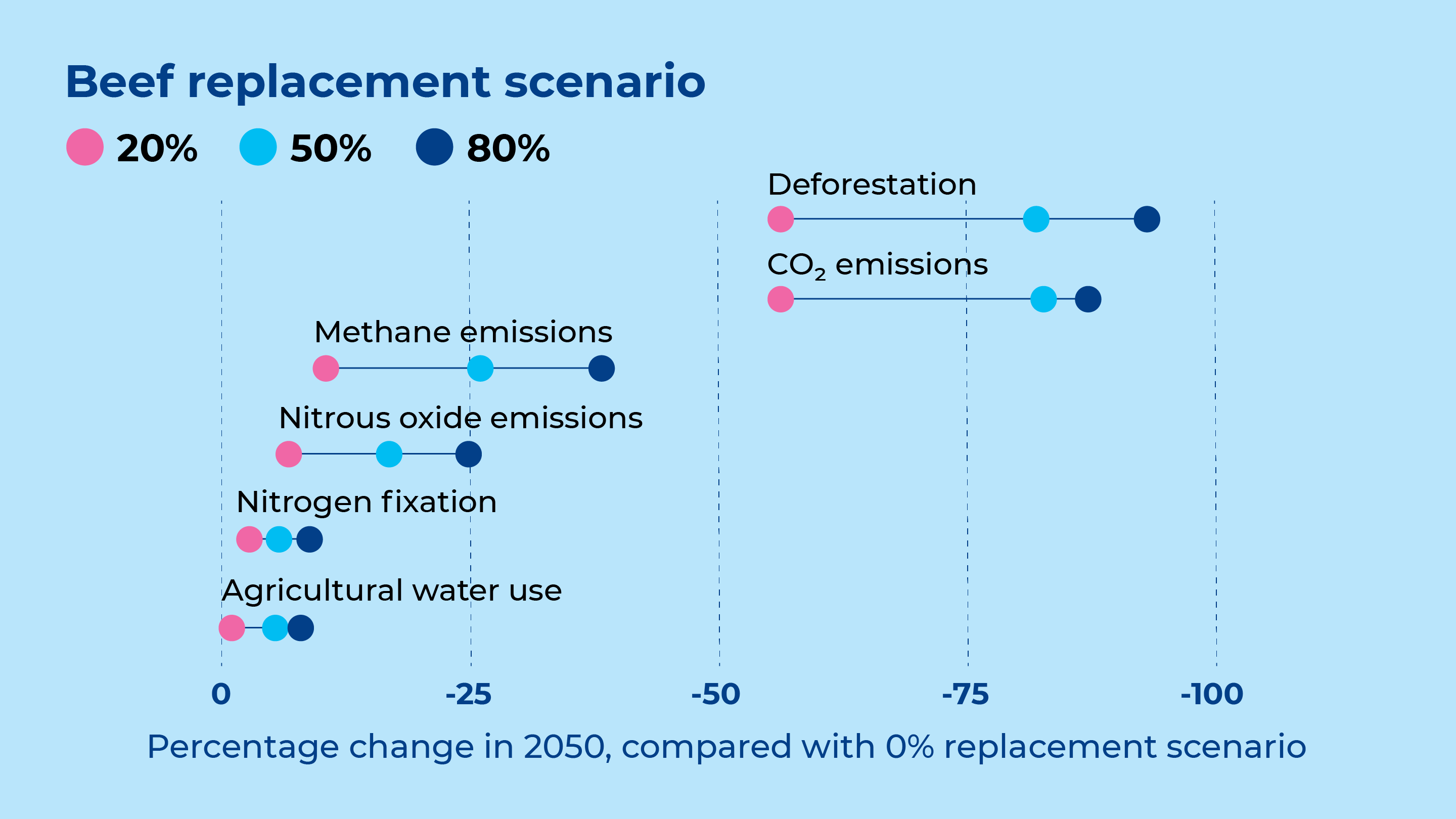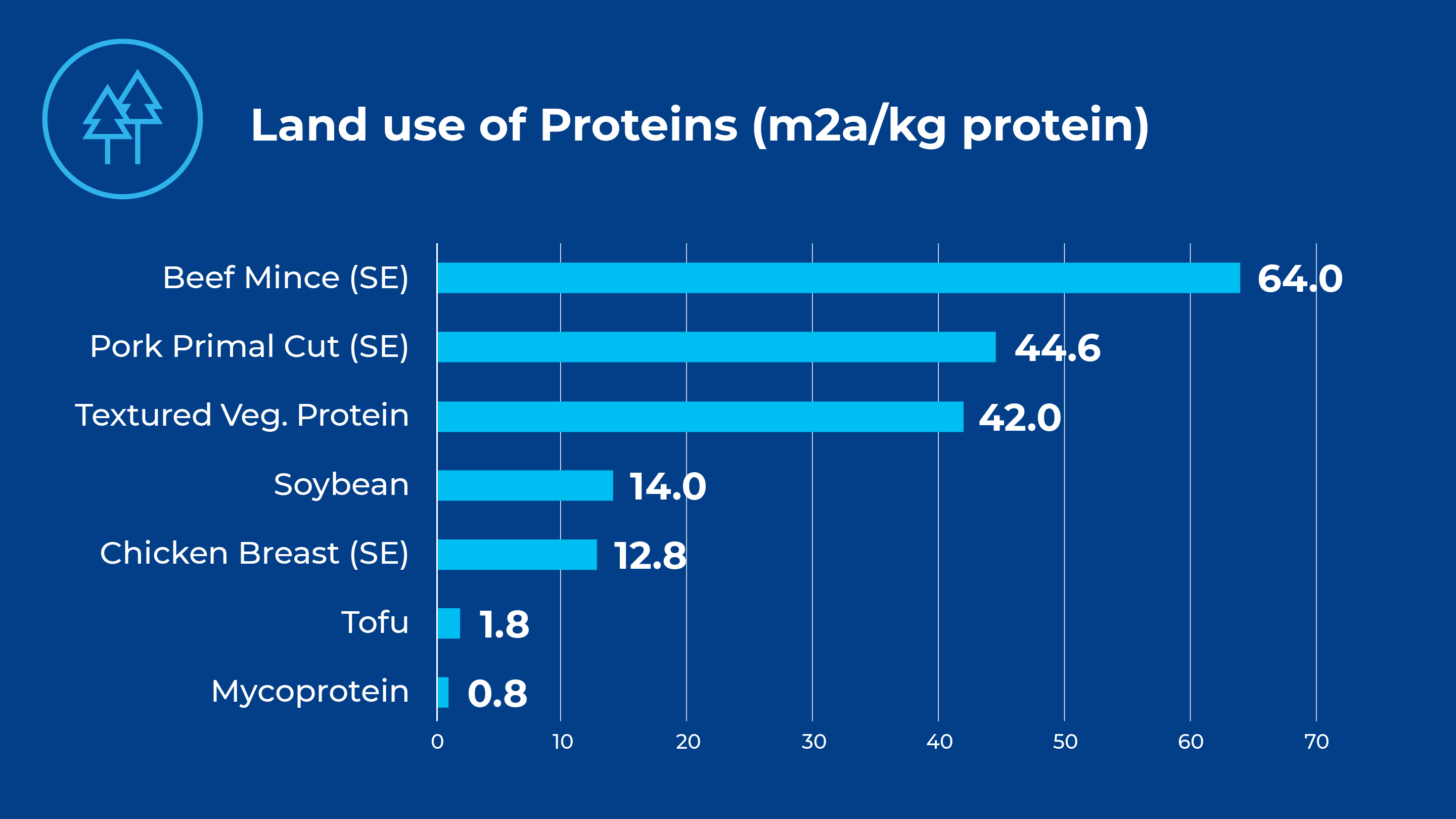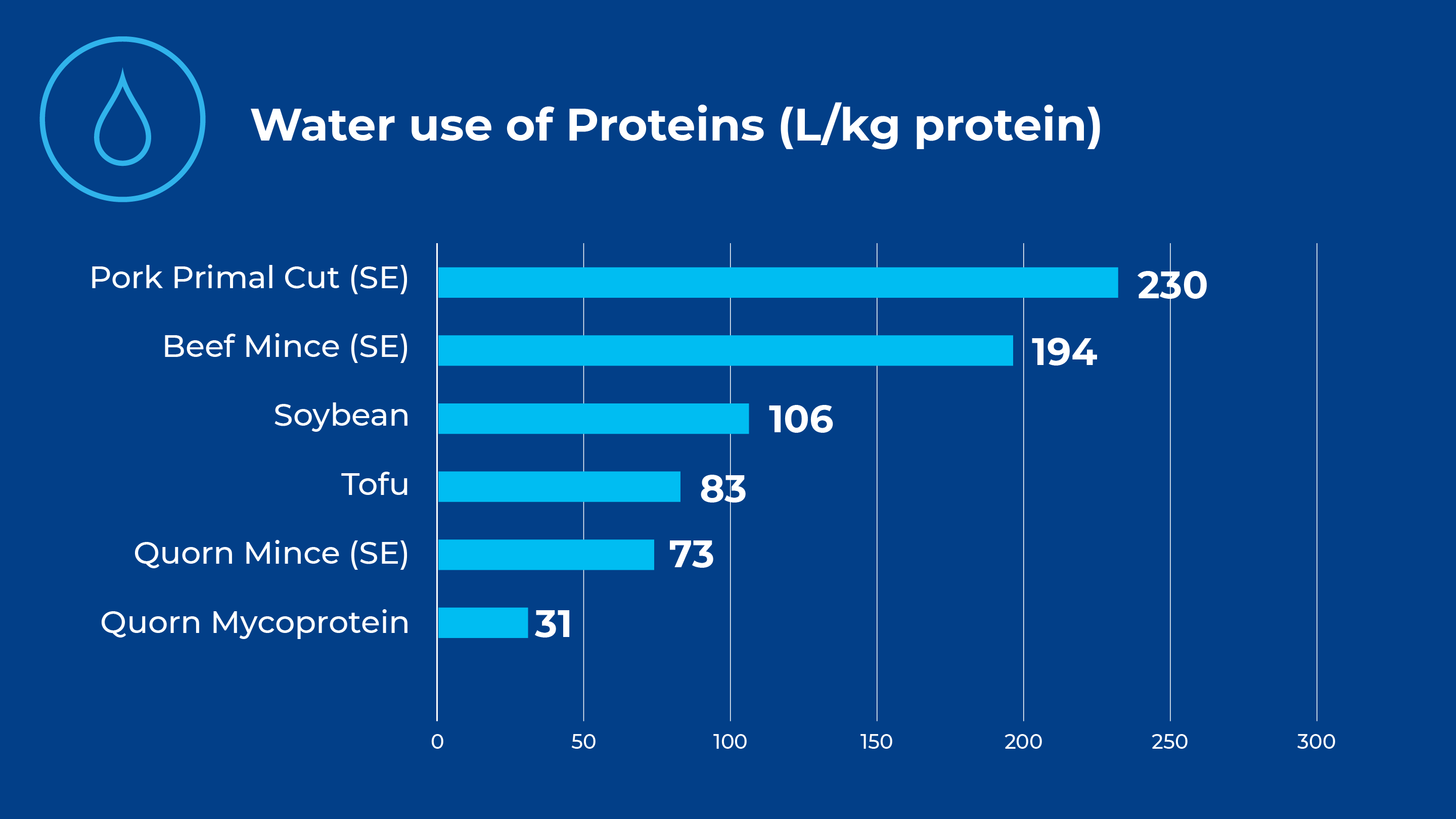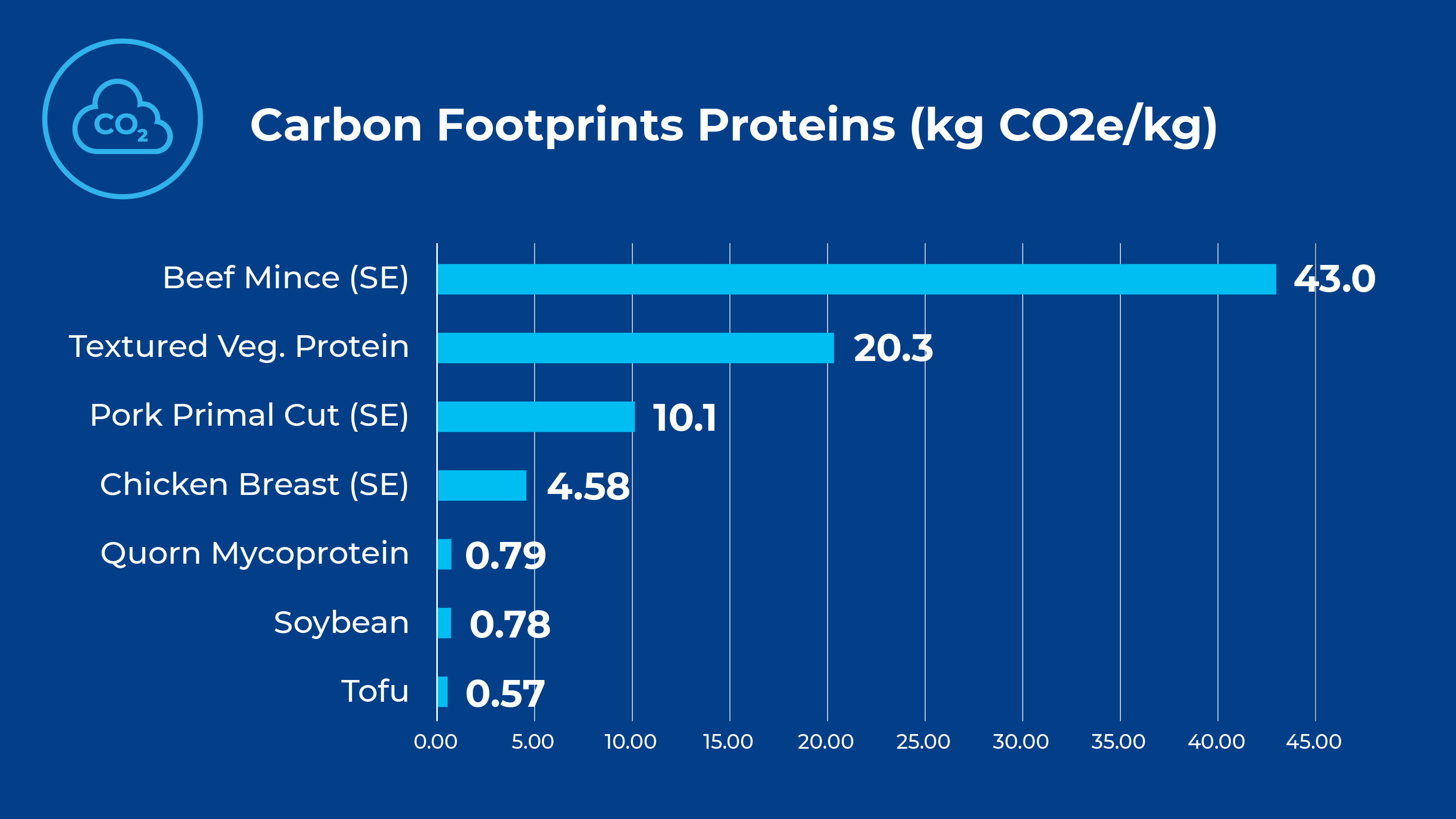New Food technologies: a way to help feed the growing population
With the global population set to hit approximately 10 billion by 20501 we need to produce more food. But simply expanding agriculture is not the answer – there isn’t enough arable land. Could New Food technologies provide an alternative food source while improving the sustainability of global food production in terms of climate impact, resource and land use, and overall carbon footprint?

Feeding a growing population
Of the many challenges currently facing the global food system, feeding a rapidly rising population is one of the most pressing. By 2050, the global population is expected to have grown by more than 25% from its 2020 level to approximately 10 billion1, but with food systems already accounting for more than one-third of greenhouse gas emissions2 and deeply reliant on resource-intensive industrial and agricultural practices, simply expanding these practices and consuming resources at the current rate is not sustainable.
And not having enough arable land is just one aspect. With much of that population growth likely to be highly concentrated in Africa as well as South and East Asia, food insecurity and people’s access to a healthy and nutritious diet will become growing concerns. So too, the continuing loss of biodiversity from the overuse of water, land, and agrochemicals.
How do New Food technologies address this?
New Food technologies could provide a possible solution to these issues. Though New Food can cover a range of alternative protein technologies, here we’re mainly referring to two fermentation-based technologies: biomass fermentation, where nutrient-rich analogues to conventional proteins are made up of microorganisms like fungi; and precision fermentation, where microorganisms are used as “cell factories” to create other functional ingredients.
As a way to produce such alternative proteins, both methods share distinct benefits compared to current agricultural practices – not least a significant reduction in the amount of land required for production3. Compared to conventional proteins, these alternative proteins require fewer inputs to produce the equivalent nutrients and calories, which translates to a reduced consumption of energy and other natural resources throughout the production chain3. But each technology also has a specific set of considerations to bear in mind regarding their respective climate impact and the implications of adoption at scale.
Biomass fermentation
When it comes to the sustainability aspect of biomass fermentation, “The food and beverage industry is just at the start of the learning curve,” says Lilly Li, a Sustainability Manager at Tetra Pak. “And depending on precisely what you are producing the process – and the subsequent impact in terms of water, land, energy usage, and waste – can vary.”
Mycoproteins (fungal protein biomass) are currently one of the leading ingredients used for producing vegetarian and vegan meat substitutes via biomass fermentation. Initial studies suggest that replacing beef in global diets with such mycoproteins could have a significant effect on deforestation and CO2.

Source: Humpenöder, F. et al. Nature 605, 90–96 (2022).
Similarly, an analysis of the environmental impact of mycoprotein – including the carbon, water, and land use footprints for each protein product – with comparable products, such as plant-based and animal-based proteins for human consumption, via a Life Cycle Analysis approach yields equally encouraging results.
The most striking advantage comes with land use. As the following diagram demonstrates, traditionally produced food products such as beef mince, pork primal cut, and chicken breast require a much larger space to produce the equivalent amount of protein when compared to mycoprotein (it is almost 80 times as efficient when compared to Swedish beef mince)5.

Sources: Quorn Carbon-Trust-Comparison-Report-2022.pdf; Quorn Sustainability-Report-2022.pdf, Mycorenaimpact report 2022; J Hadi, G Brightwell-Foods, 2021
Mycoprotein also uses less water in terms of litres per kg required to produce a finished protein product (L/kg) – for one leading mycoprotein producer, this figure is just 31 l/kg, making it 62% more efficient compared tofu, 71% more efficient compared to soyabean, and 84% more efficient compared to Swedish beef mince6.

Sources: Quorn Carbon-Trust-Comparison-Report-2022.pdf; Quorn Sustainability-Report-2022.pdf, Mycorenaimpact report 2022; J Hadi, G Brightwell-Foods, 2021
Overall, this means that the total carbon footprint – defined as all greenhouse gases released by the various processes required to produce the finished protein product from ‘cradle to the processing gate’ – for mycoprotein is drastically lower; just 0.79 kg CO2e/kg for a leading mycoprotein producer. This represents an 82% reduction compared to chicken breast, a 92% reduction compared to pork primal cut, and a 98% reduction compared to Swedish beef mince7.

Sources: Quorn Carbon-Trust-Comparison-Report-2022.pdf; Quorn Sustainability-Report-2022.pdf, Mycorenaimpact report 2022; J Hadi, G Brightwell-Foods, 2021
Precision fermentation
According to Ashish Acharya, a Food Technology Manager at Tetra Pak, there are two distinct strands of precision fermentation, both of which must be considered separately – its use for biomaterials and in the biopharma industry, and for the generation of New Food components. “Precision fermentation is not new – it has been used for many years, sometimes even decades, to produce or harvest rare or complex components that would otherwise consume huge amounts of resources or are impossible to obtain naturally,” he says. Examples include many different food ingredients and nutritional products such as chymosin, a key component of rennet, which is used in cheese production, and oligosaccharides found in human breast milk, a vital part of infant nutrition.
“Some of these fermentation processes are very water- and energy-intensive, but with some things like the oligosaccharides, producing them naturally at scale just isn’t possible. Of course, we can look at ways to recycle heat, purify wastewater, and deploy some of our other advanced technologies to make the process more efficient, but currently, there aren’t any production alternatives for these components.”
But precision fermentation is becoming increasingly important, including from a sustainability point of view, with regard to the production of milk and animal proteins. “If you look at the increasing impact of industrial agricultural practices on deforestation or greenhouse gas emissions, precision fermentation can help address some of these issues,” says Acharya. “Take milk proteins, for example – in the future, with further advancement in precision fermentation, you wouldn’t need as many cows, meaning you wouldn’t need that amount of land or water, and you wouldn’t need the feed, or even more land to grow that feed. And you’d also reduce the methane gas emissions associated with cattle, a greenhouse gas that has 25 times the impact that CO2 does8.”
It's the same with beef – a product that, says Acharya, “is considered to have the highest negative impact in terms of climate change9” – and other animal proteins. Using precision and biomass fermentation at scale means we could significantly reduce substantial climate impact aspects from the production chain – deforestation, water for the animals, and the land required for grazing and growing feed.
Dealing with waste and by-products
Precision and biomass fermentation do, however, produce waste and by-products, factors that need to be considered when assessing the overall climate impact of the process. “It produces a sizable amount of gas, as does biomass fermentation,” says Acharya. “In most cases, this is CO2, but there are other gases as well, depending on what compound you are producing, what type of fermentation, and what type of microorganism you are using.” With advances in biotechnology, perhaps in the future these gases could be purified or fed back into the loop as a carbon feedstock source – much research is currently being done in this area10.
And then there’s the issue of the spent microorganisms, and how this waste is dealt with. Precision fermentation involves genome modification of the microbes used; as such, there is a strict regulatory framework for dealing with the waste products produced.
“Currently, they perform something called a GMO (Genetically Modified Organism) kill,” says Acharya. “You add concentrated sodium hydroxide and increase the pH to >11, which neutralises and denatures/defragments all the DNA.” And depending on the specific GMO’s containment level, the waste is treated differently, but the end goal is the same – no active genetic material being released into the environment11.
“For GMOs with a lower containment level, the GMO can be killed off through chemical disinfection and/or heat treatment,” says Christina Schornack, an Equipment Safety Specialist at Tetra Pak. “It’s the containment level that specifies the handling procedure requirements12 – this protects those working with pathogens, the wider community, and the environment, especially with regard to waste treatment.”
Furthermore, Lilly Li adds, “GMO waste requires a full-scale Life Cycle Assessment, especially regarding its potential toxicity risks for ecosystems and humans.” The recycling or reuse of this waste stream is also being investigated, says Li, particularly with regard to biomass fermentation. “The potential for reuse, and for recovering a substantial amount of water from biomass fermentation waste streams, is quite significant,” she says. “We expect to see more outcomes from research and development in integrating circularity concepts into the process design in the coming years.”
Very limited data regarding direct comparisons between traditionally produced products and those incorporating precision-fermented proteins is currently available. “This type of ingredient production is still in its infancy, but rapidly developing,” says Acharya. “So there are lifecycle assessments on the process used to produce individual components, like milk protein, but that’s just one compound in the end product – it’s not the full spectrum of milk components produced using precision fermentation.”
But for Acharya, the potential for precision fermentation – and biomass fermentation – seems clear. “The possibilities are enormous, especially when you look at creating functional foods – making nutritionally superior proteins and getting rid of protein allergies,” he says. “And when we look at the current yield of the component protein of interest you can produce per time per volume, over the next five or so years, we’ll be able to increase the efficiency of the fermentation process, and thus the yield, by a factor of five or six – then we’ll see scaling up to commercial levels happening simultaneously. It’s going to be a game changer.”
Footnotes:
- Source: https://sdg.iisd.org/news/world-population-to-reach-9-9-billion-by-2050/
- Source: https://www.unido.org/stories/new-research-shows-food-system-responsible-third-global-anthropogenic-emissions
- Source: https://gfi.org/blog/regenerative-agriculture-and-alternative-proteins/
- Source: Humpenöder, F. et al. Nature 605, 90–96 (2022).
- The land footprint focuses on the physical area required to produce the finished product. For meat products, this mainly involves the land that livestock is raised on (such as the area livestock need to live on) and the land used to grow the feed that livestock consumes. The land footprint is expressed in terms of square meter annua per kg of finished product as proteins or protein contained in food (m2a/kg).
Sources for data: Quorn Carbon-Trust-Comparison-Report-2022.pdf; Quorn Sustainability-Report-2022.pdf, Mycorenaimpact report 2022; J Hadi, G Brightwell-Foods, 2021 - The total amount of water used during the processes required to produce the finished product. This includes water consumed by the animals (such as water that the livestock has drank), water used to produce the feed and the growing of crops, and water consumed during processing. The water footprint is expressed in litres per kg of the finished protein product (L/kg).
Sources for data: Quorn Carbon-Trust-Comparison-Report-2022.pdf; Quorn Sustainability-Report-2022.pdf, Mycorenaimpact report 2022; J Hadi, G Brightwell-Foods, 2021 - The measurement units are carbon dioxide equivalent (CO2e). CO2e is a reference unit to assess the global warming potential of various GHGs such as carbon dioxide and methane. The carbon footprint is expressed in terms of per kg of the finished product as proteins or containing proteins (kg CO2e/kg).
Sources for data: Quorn Carbon-Trust-Comparison-Report-2022.pdf; Quorn Sustainability-Report-2022.pdf, Mycorenaimpact report 2022; J Hadi, G Brightwell-Foods, 2021 - Source: https://www.epa.gov/gmi/importance-methane#:~:text=Methane%20is%20more%20than%2025,due%20to%20human%2Drelated%20activities
- Source: https://www.nature.com/articles/s43016-021-00358-x
- Source: https://www.sciencedirect.com/science/article/abs/pii/S095816692200057X
- Source: The Alkaline Denaturation of DNA Biophys J. 1969 Nov; 9(11): 1281–1311.
- Reference to DIRECTIVE 2009/41/EC OF THE EUROPEAN PARLIAMENT AND OF THE COUNCIL of 6 May 2009 on the contained use of genetically modified microorganisms







